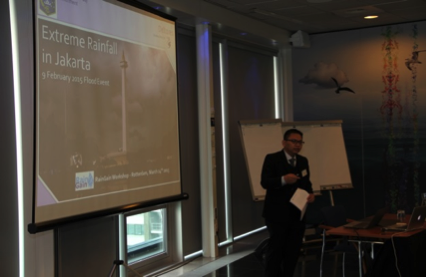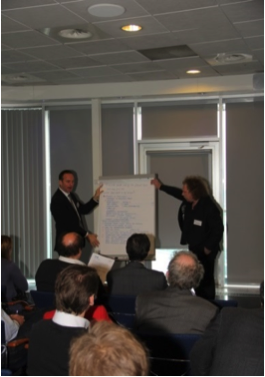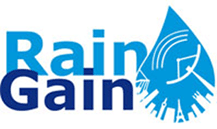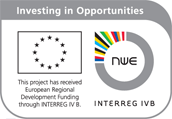RainGain International Workshop in Rotterdam
24th of March 2015
Feirully Irzal, one of the guests from Jakarta, followed this up with a presentation about extreme rainfall in Jakarta. He illustrated the extreme rainfall events of January 2013 and February 2015. These rainfall events lasted about 4-5 hours, with a total amount of 361 mm. To cope with this quantity of rainfall, they need a lead time of about 8 hours for preparation activities, like evacuation of certain areas.
This was followed by a presentation by Daniel Goedbloed, who presented Rainproof Amsterdam. To introduce this topic he compared the water systems of Rotterdam and Amsterdam. These two water systems are both lowland systems with little elevation differences, but Rotterdam consists mostly of polder areas below sea level, while most areas in Amsterdam are directly connected to the “boezem” system at mean sea level, with some in-lying polder areas towards the outskirts. Goedbloed explained that in both cities smaller scale solutions are introduced to protect against flooding, and elaborated on the importance of bottom up initiatives and the involvement of city’s residents. Goedbloed also mentioned that we need to find balance between flood risk management and the added value of rainwater use for other purposes.
During the 2nd part of the International Workshop, radar specialist Herman Russchenberg explained the added value of polarimetric X-band radars and Daniel Schertzer shared his experience with the installation of the X-band radar in Paris. In addition, the radar manufacturer of the Rotterdam radar (SSBV) presented the specifications of the X-band radar, and elaborated on the radar development process from the first step till the final installation.
|
AGENDA
|

Feirully Irzal presenting the extreme rainfall event of February 2015 in Jakarta

Alex Nickson presenting possible solutions of the break-out session
|
|
| Location | Inntel Hotel Rotterdam Centre, Leuvehaven 80, 3011 EA Rotterdam: directions | |
| 9:00 | Welcome | |
| 9:30 | Opening International Workshop | |
| 9:45 | Presentation 1 - Feirully Irzal - Extreme rainfall in Jakarta | |
| 10:15 | Presentation 2 - Daniël Goedbloed - Amsterdam Rainproof | |
| 10:45 | Break | |
| 11:15 | Breakout session 1 - Coping with extreme rainfall 1 | |
| 12:30 | Lunch | |
| 13:30 | Presentation 3 - SSBV - The Rotterdam radar | |
| 14:00 | Presentation 4 - Herman Russchenberg - Added value x-band radar | |
| 14:30 | Break | |
| 15:00 | Breakout session 2 - Coping with extreme rainfall 2 | |
| 16:00 | Review, discussion and closing | |
| 17:00 | Workshop finished | |
This event followed the 7th RainGain Project Meeting on the 23rd of March: click here for further information.



